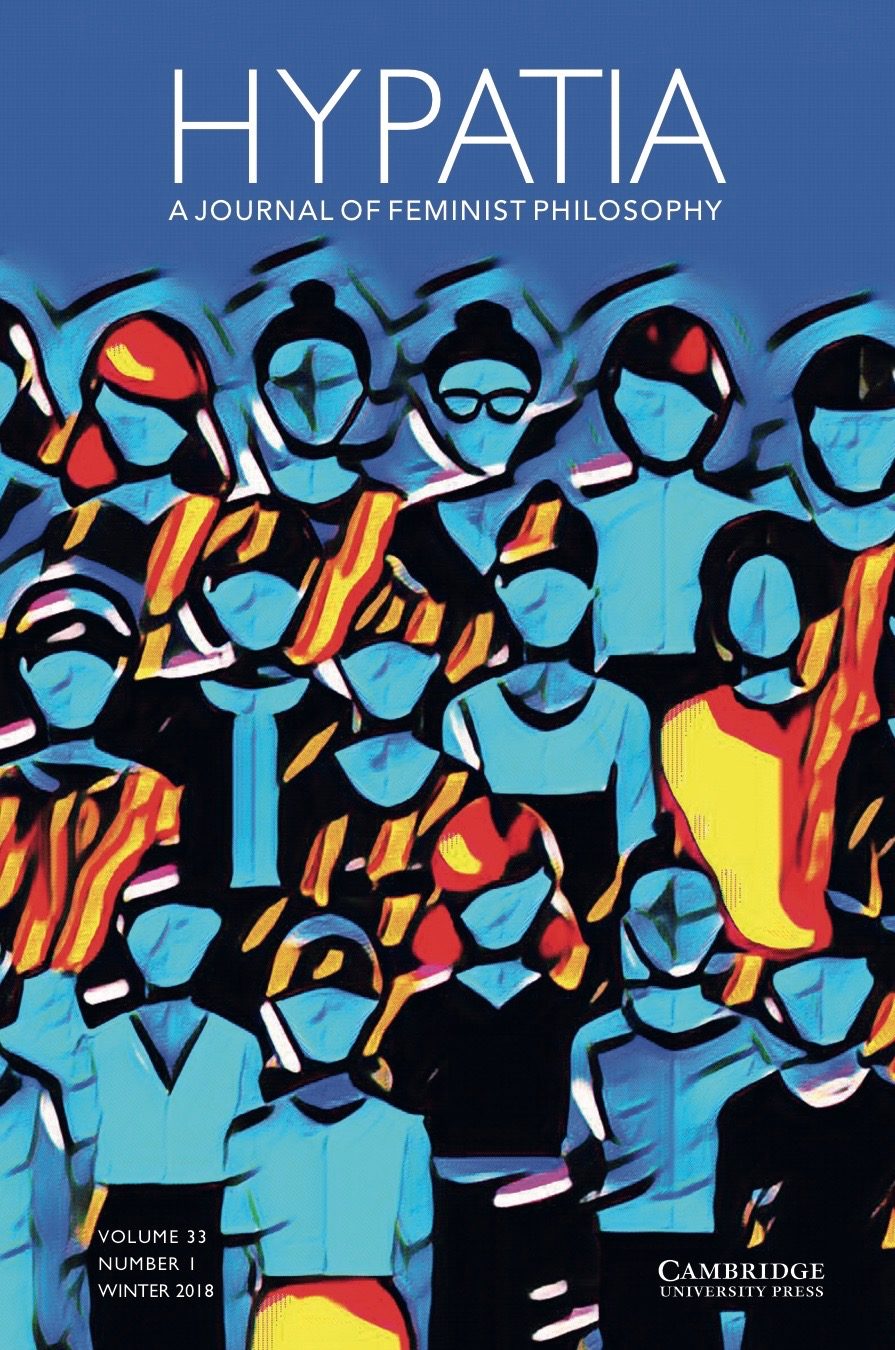Manuscripts should be prepared following Hypatia House Style and the Chicago Manual of Style (17th Edition), as outlined below. Hypatia's style follows the Chicago Author-Date format, not the Chicago Notes and Bibliography format. Review essays and Musings should be formatted like articles, except they need not include an abstract or be anonymous. Endnotes and references should be formatted following the guidelines below. Hypatia publishes Articles, Musings, and Review essays. We do not publish notes, responses to articles or book reviews, or letters to the editor.
File Type and Format
All manuscripts should be submitted as Microsoft Word files. They should be double-spaced (including quotations, notes, and references), and the right margin should not be justified.
For book review manuscript submission, please see the guidelines for Hypatia Reviews Online (HRO).
Anonymity
To facilitate our anonymous review process, authors should ensure that they or their institution cannot be identified in the manuscript or the abstract (for example: personal references, acknowledgments, conferences or seminars attended, name in document title, etc). If a manuscript includes essential reference to the author (e.g., autobiographical detail crucial to the content of the paper), we ask that the author remove as much identifying information as possible and confirm with the Editor their understanding that it may not be possible to ensure anonymity in the review process.
Abstract
Article manuscripts should include an abstract of no more than 200 words. Review essays, Musings, and special feature introductions (e.g., cluster and symposium introductions) do not require an abstract.
Figures
If a manuscript includes figures, illustrations, or artwork, authors must submit these files with their final draft. Please confirm arrangements for figures with the Managing Editor before submitting an accepted manuscript for production. See the section on “Illustrations, Images, and Graphics” on the Submission Guidelines page.
Headings
Please use title capitalization style for the title of an article, and for internal headings and subheadings.
For example:
Title: Strategies for Making Feminist Philosophy Mainstream Philosophy
Heading: Ontological Interdependence
Also, note that we avoid the use of generic titles like "Introduction" and “Conclusion.” The heading for the final section of a paper should indicate more specifically the content of the conclusion.
Spelling
Please use American spellings and punctuation except when directly quoting a source that has followed British style.
Commas
Hypatia uses the serial, or Oxford, comma. For example: “Vulnerability, Ignorance, and Oppression” instead of “Vulnerability, Ignorance and Oppression”
References
References need not be formatted before review, but they must be formatted before a manuscript can be copy-edited and sent into production. Please ensure that your references conform to these guidelines.
In Text Citations:
We use the author/date system for in-text citations, as described in The Chicago Manual of Style (15th ed., University of Chicago Press, 2003). In the text or in notes, citations should take the following form: (author year, page number); for example (Card 2003, 65). The page number alone can be used if understood from the context; for example (65). Multiple citations should be in chronological order, and, if in the same year, alphabetical within year; for example (England 2004; Pierce 2005; Pratt 2005; Jiwani and Young 2006).
References:
A list of all works cited in the manuscript should be included after the notes in a section titled "References." The titles of articles and books included in the reference list should follow sentence capitalization style: only the first word and proper nouns are capitalized. Quotation marks should not be used for the titles of articles. Book and journal titles should be italicized. Journal citations should include both volume and issue numbers. For example:
Books:
Oluo, Ijeoma. 2018. So you want to talk about race. New York: Seal Press.
Deloria, Jr., Vine. 1999. Spirit and reason: The Vine Deloria, Jr. reader, ed. Barbara Deloria, Kristen Foehner, and Sam Scinta. Golden Fulcrum Publishing.
Journal Articles:
McDonald, CeCe. 2017. "Go beyond our natural selves": The prison letters of CeCe McDonald. Transgender Studies Quarterly 4 (2): 243–65.
Chapter from a Book:
Anzaldúa, Gloria. 2015. Speaking in tongues: A letter to Third World women writers. In This bridge called my back: Writings by radical women of color, 4th ed., ed. Cherríe Moraga and Gloria Anzaldúa. Albany: SUNY Press.
Two or More Authors:
Collins, Patricia Hill, and Sirma Bilge. 2016. Intersectionality. Cambridge: Polity.
Newspaper Article:
Dabashi, Hamid. 2013. Can non-Europeans think? Al Jazeera, January 15.
Website:
National Down Syndrome Society. 2002. About Down Syndrome. http://www.ndss.org/aboutds/aboutds.html.
Legal Document:
Education for All Handicapped Children Act. 1975. U.S. Public Law 94-142, U.S. Code. Vol. 20, sec. 1400 et seq.
